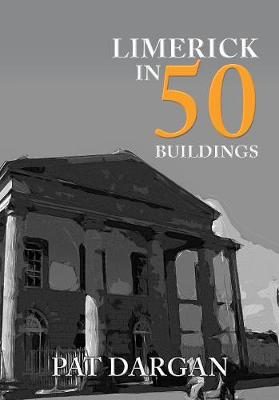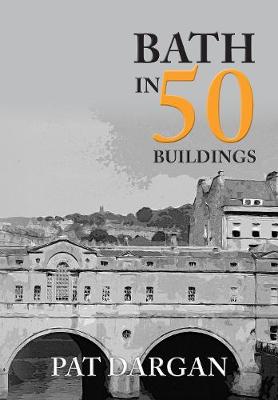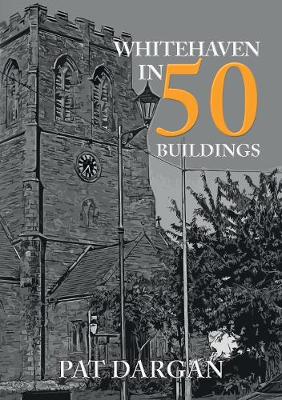In 50 Buildings
4 total works
The city of Limerick, in the west of Ireland, has an interesting history. Established by the Vikings on the estuary of the River Shannon as it flows into the Atlantic, the city was taken over by the Normans in the twelfth century and fought over during the civil wars in the seventeenth century. The city expanded greatly in the Georgian and Victorian eras and this legacy has given Limerick a significant historical fabric of buildings from many ages. Limerick's Gothic St Mary's Cathedral, the Norman King John's Castle, medieval defences, imposing Georgian public buildings, extensive Victorian religious and industrial buildings, its museums and its modern architecture all reflect a dynamic local history. Limerick in 50 Buildings explores the history of this fascinating city through a selection of its most interesting buildings and structures, showing the changes that have taken place in city over the years. This book will appeal to all those who live in Limerick or who have an interest in the city.
The ancient city of Bath in Somerset grew up around hot springs on the River Avon, where the Romans founded baths at the location they named Aquae Sulis, the magnificent buildings of which still stand today. The health-giving fame of the waters brought wealth and visitors to the town in later centuries and Bath became an important and fashionable spa town during the Georgian period, attracting high society and gentry from London and around the country. Bath was transformed in the Georgian era as leading architects left a remarkable historical legacy, much of it built in the distinctive Bath stone. Despite being targeted in the Baedeker raids during the Second World War, the legacy of Bath's historical structures has remained intact, and the city has been recognised with its status as a UNESCO World Heritage Site.
Bath in 50 Buildings explores the history of this fascinating city through a selection of its most interesting buildings. These buildings represent architectural and historic periods from Roman Britain to the present day including the Roman Baths, the medieval abbey church, the elegant sweep of the Georgian Royal Crescent, the striking Circus, the magnificent Pump Room and Assembly Rooms as well as many streets and squares of the period and Robert Adam's Pulteney Bridge. Twentieth-century and present-day architecture is also represented in Bath with new commercial and housing developments, its two universities, Thermae Spa and Southgate Shopping Precinct, theatres and other cultural centres. The book will appeal to all those who live in Bath or who have an interest in the city.
Bath in 50 Buildings explores the history of this fascinating city through a selection of its most interesting buildings. These buildings represent architectural and historic periods from Roman Britain to the present day including the Roman Baths, the medieval abbey church, the elegant sweep of the Georgian Royal Crescent, the striking Circus, the magnificent Pump Room and Assembly Rooms as well as many streets and squares of the period and Robert Adam's Pulteney Bridge. Twentieth-century and present-day architecture is also represented in Bath with new commercial and housing developments, its two universities, Thermae Spa and Southgate Shopping Precinct, theatres and other cultural centres. The book will appeal to all those who live in Bath or who have an interest in the city.
Whitehaven was just a fishing village on the Cumbrian coast until the port was developed by the Lowther family in the seventeenth century to export coal from the Cumberland coalfield. In the next century it benefitted from the trade in tobacco, sugar and other products with the West Indies to become the second busiest port in the country. The wealth brought to the area was demonstrated by a new town, the most complete example of a Georgian planned town in Britain. Built on a grid system, the town has over 170 listed buildings. Alongside the Old Fort and Whitehaven Castle, which later became the hospital, are historic houses, shops, churches, civic buildings, hotels, public houses and banks as well as reminders of Whitehaven's industrial heritage around the harbour, the colliery and the railway. Although the port has declined in recent years and mining ceased in the area, the harbour has been regenerated with a marina and the old colliery buildings preserved and turned into a museum.
Whitehaven in 50 Buildings explores the history of this fascinating Cumbrian town through a selection of its most interesting buildings and structures, showing the changes that have taken place in Whitehaven over the years. The book will appeal to all those who live in Whitehaven or who have an interest in the town.
Whitehaven in 50 Buildings explores the history of this fascinating Cumbrian town through a selection of its most interesting buildings and structures, showing the changes that have taken place in Whitehaven over the years. The book will appeal to all those who live in Whitehaven or who have an interest in the town.
Dublin was established as a Viking settlement in the early Middle Ages and, following the Norman Invasion of Ireland, rapidly grew in size and importance to become a major city. Following the English conquest of Ireland in the sixteenth century, Dublin continued to develop as a centre of trade, and its growing prosperity into the eighteenth century is demonstrated by the city's rich Georgian architectural legacy, which still forms an important part of Dublin's character today. Following independence in 1922, Dublin became the capital city of Ireland and although the fabric of the city centre suffered during the 1916 Easter Rising, the Irish War of Independence and the subsequent Civil War, it has been at the forefront of the country's economic expansion in recent decades. Today, Dublin has many significant modern buildings standing alongside its more historical architectural legacy.
Dublin in 50 Buildings explores the history of this fascinating city through a selection of its most interesting buildings, including the Norman Dublin Castle, the Georgian Customs House by the River Liffey, the twentieth-century Guinness Storehouse, along with buildings that may not be as well known but are equally interesting.
Dublin in 50 Buildings explores the history of this fascinating city through a selection of its most interesting buildings, including the Norman Dublin Castle, the Georgian Customs House by the River Liffey, the twentieth-century Guinness Storehouse, along with buildings that may not be as well known but are equally interesting.



